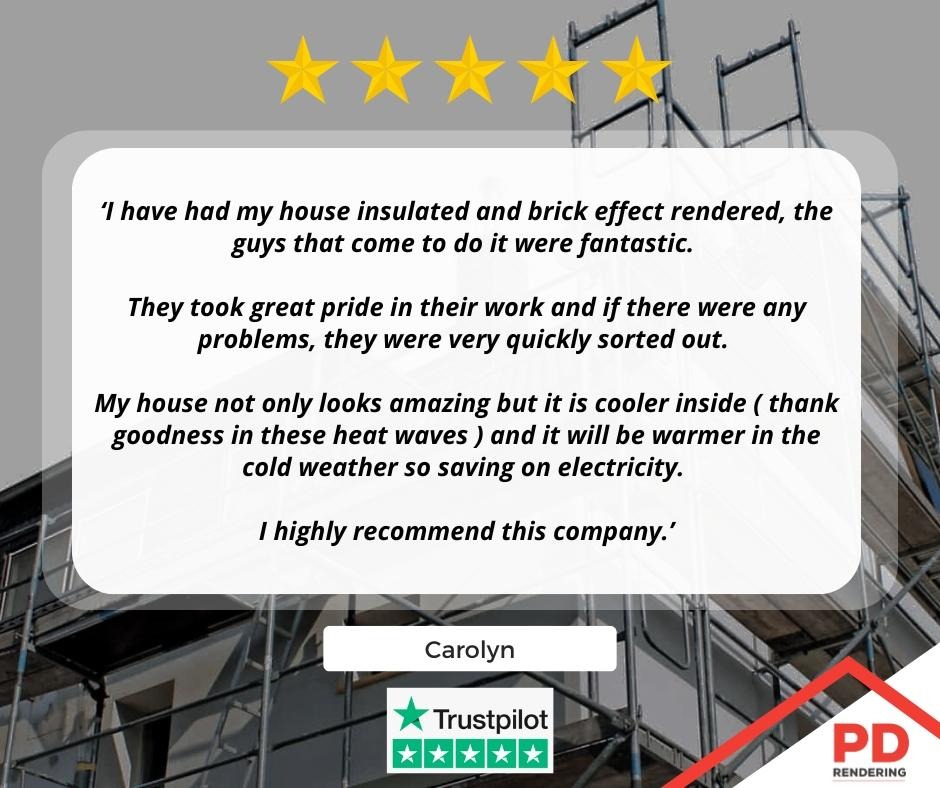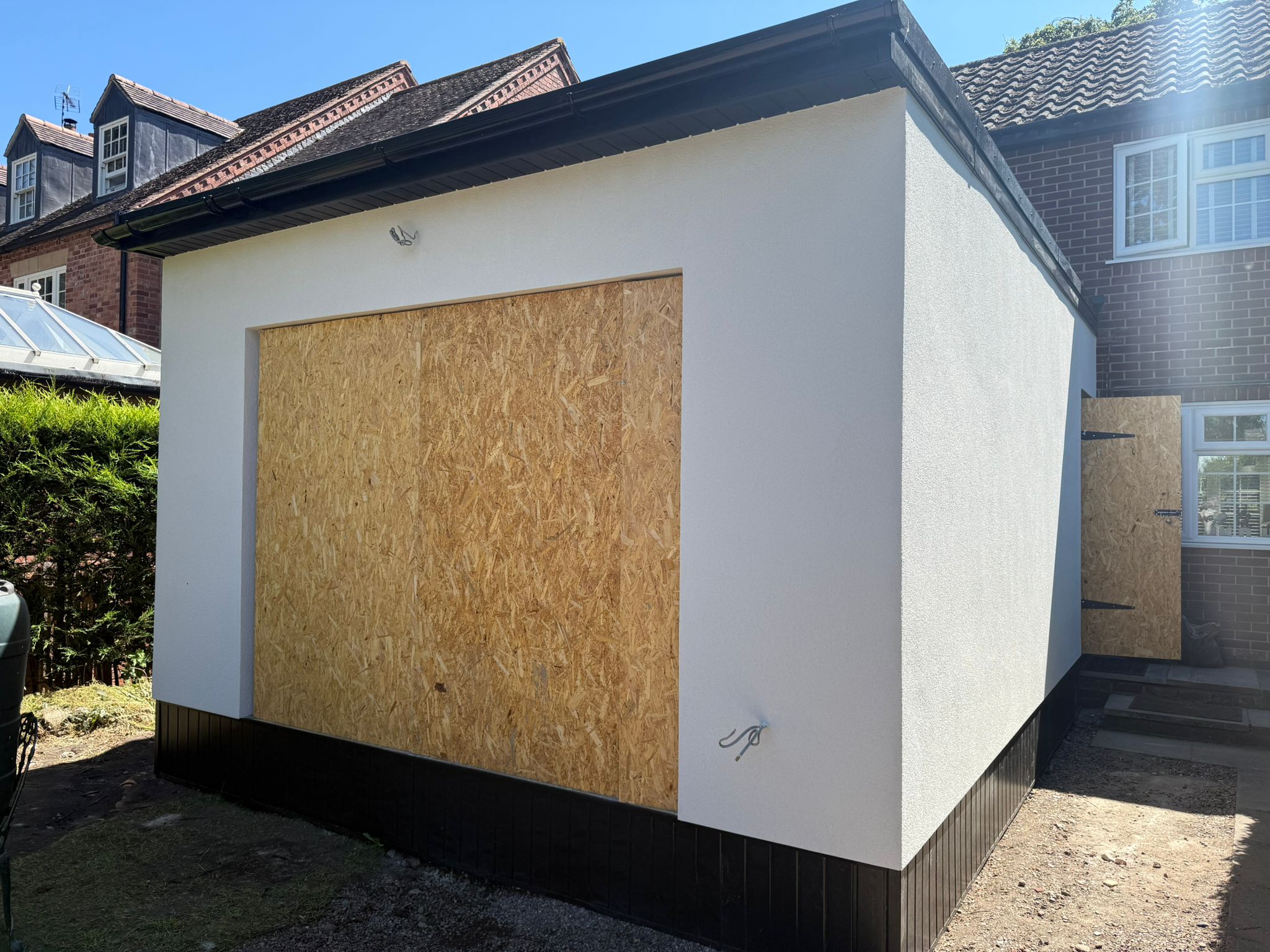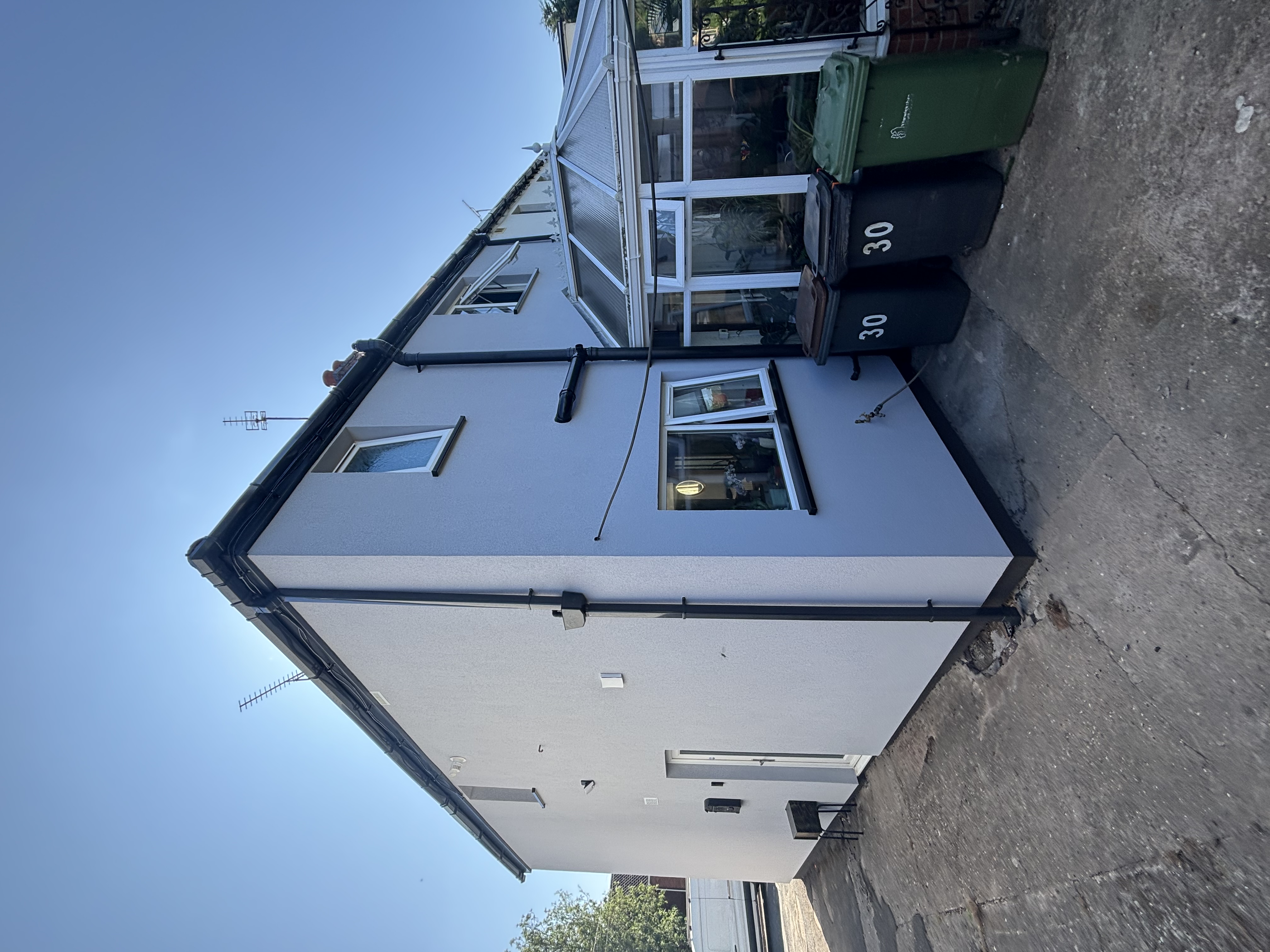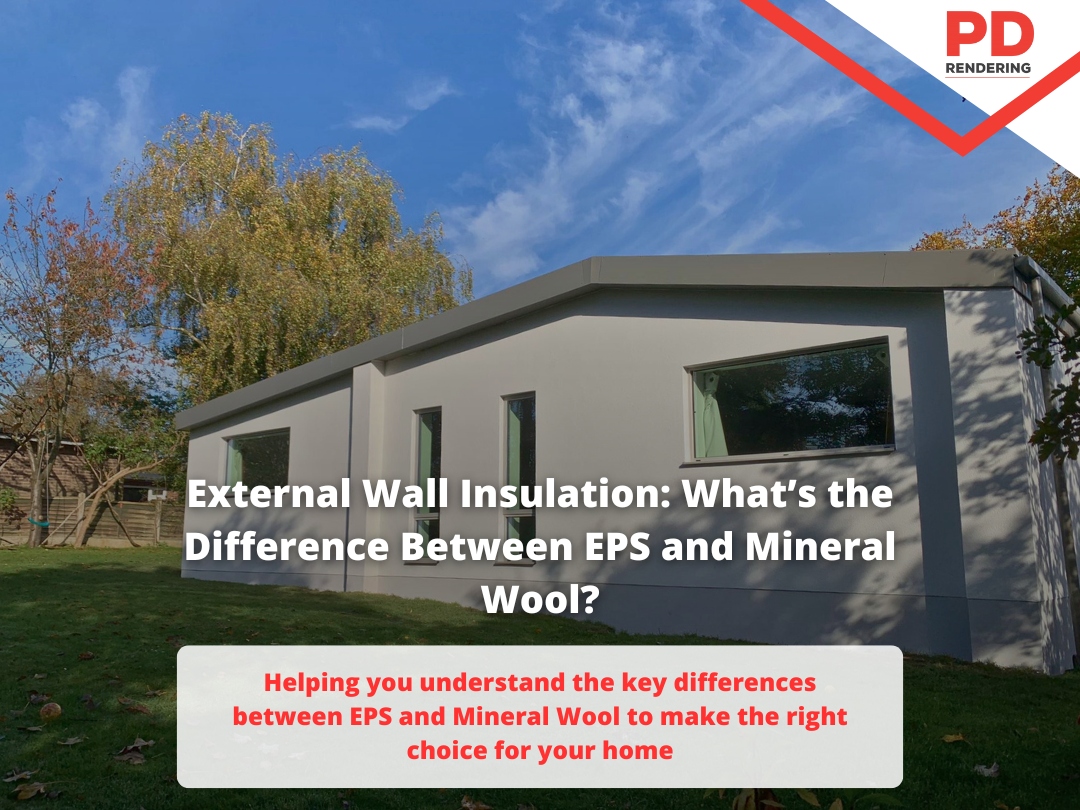
External wall insulation is one of the most effective ways to reduce heat loss, cut energy bills, and make your home more comfortable. With energy prices still high, many homeowners are looking for practical solutions to improve long-term energy efficiency.
To get the best results from external wall insulation, it’s important to choose the right insulation material. In the UK, the two most widely used materials are EPS (Expanded Polystyrene) and Mineral Wool, each with its own benefits and considerations. This guide breaks down the key differences.

EPS is a rigid, lightweight insulation material made from expanded polystyrene beads; a type of foam plastic that’s about 98% air. It’s been used in construction since the 1970s and is commonly applied in walls, floors, and roofs. EPS is especially popular for solid-wall properties.
Mineral wool is made by heating natural materials like stone and silica until molten, then spinning them into fibres and forming dense insulation boards. It’s breathable and provides strong performance in both fire resistance and sound insulation.
Because of its non-combustible nature, mineral wool is often chosen for multi-storey or multi-occupancy buildings. To match the thermal performance of EPS, it usually requires a thicker application around 110mm, but offers an A1 fire rating, making it ideal for projects where safety is a key priority.
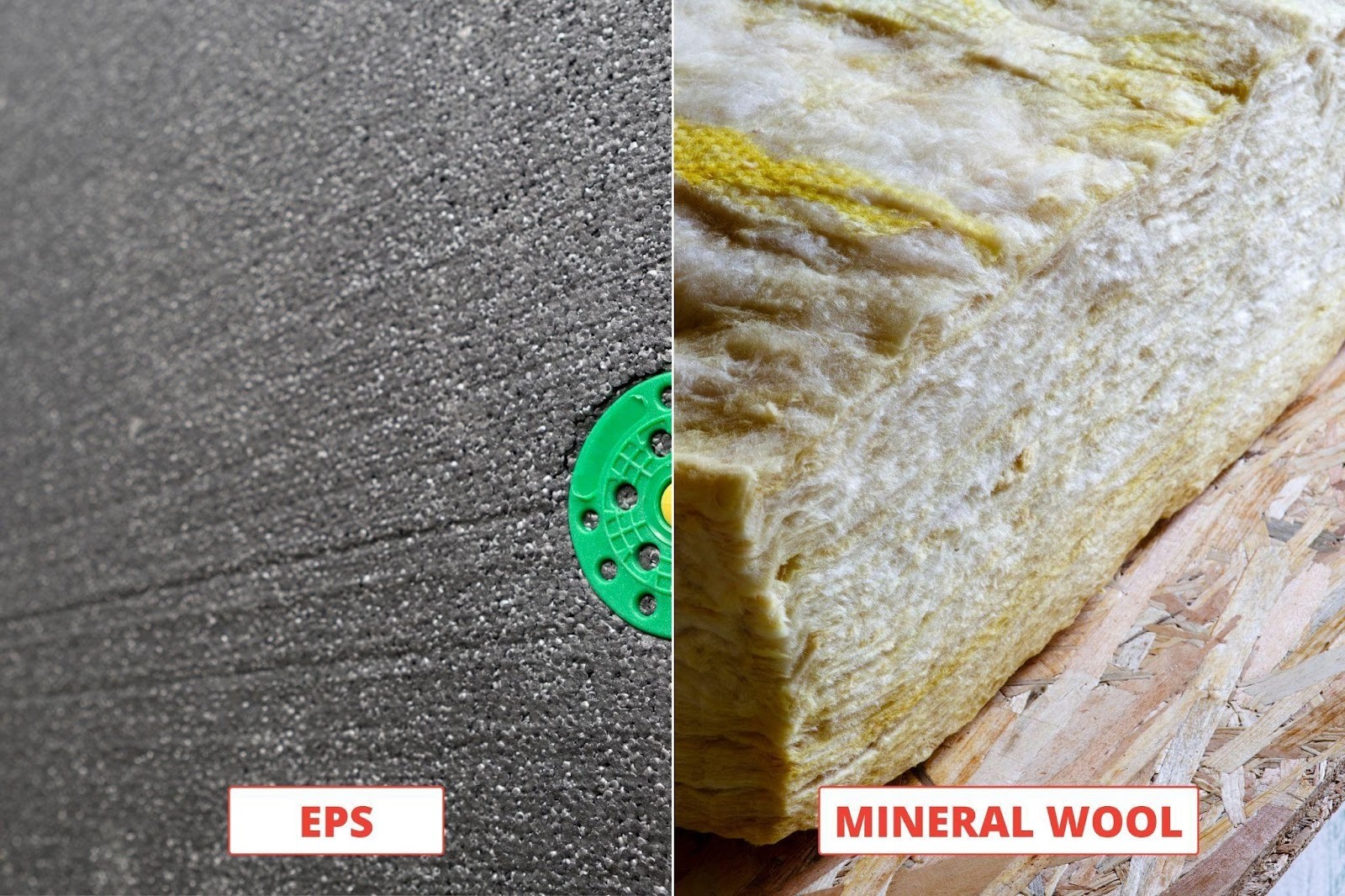
EPS must be treated with fire-retardant additives. When properly installed as part of a certified insulation system: including fire breaks, mechanical fixings, and a protective render layer, EPS meets UK fire safety standards for low-rise residential properties. While it’s not suitable for every building type, EPS is widely used and considered safe when installed by trained professionals following the system manufacturer's guidelines.
Mineral wool is non-combustible and does not contribute to fire spread. It carries a Euroclass A1 fire rating (the highest classification under EN 13501-1). It can withstand temperatures exceeding 850°C without melting. Because of this, it’s commonly used in multi-storey or multi-occupancy buildings. INCA’s fire safety guide outlines how these classifications apply to EWI systems in the UK.
Mineral wool is highly vapour-permeable (breathable), allowing moisture vapour to escape through the wall structure. This makes it particularly suitable for solid-wall buildings, older properties, or heritage homes, where managing internal moisture and preventing condensation is essential.
EPS, while less breathable, is highly water-resistant. It repels liquid water, making it better suited for modern masonry walls and buildings where moisture ingress from the outside is a bigger concern than vapour permeability. In such cases, a vapour control strategy should be integrated into the system design.
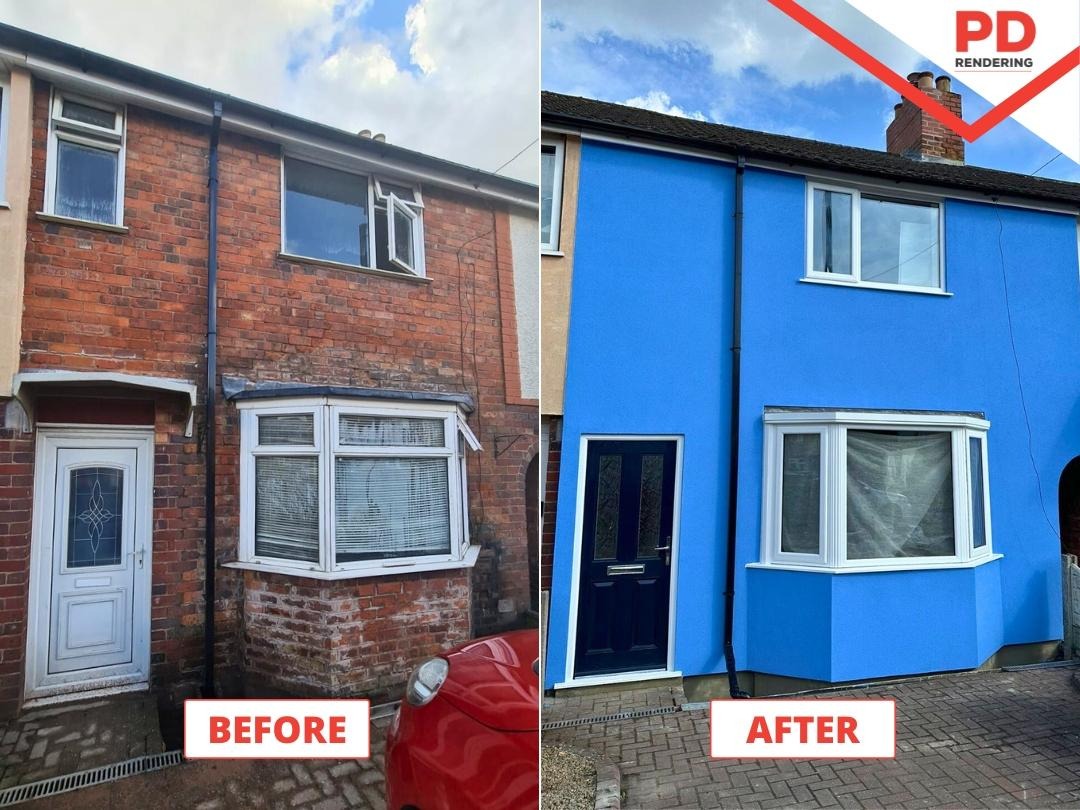
EPS offers excellent thermal insulation. With a typical thermal conductivity of around 0.032 W/mK (or as low as 0.030 W/mK for enhanced grey EPS), a 90–100mm layer can achieve a U-value of approximately 0.28 W/m²K - meeting UK building regulation targets for solid wall insulation.
Mineral wool, in comparison, has a thermal conductivity of around 0.035–0.036 W/mK, depending on the product type. To reach a similar U-value of 0.30 W/m²K, you’ll typically require 110–120mm of mineral wool insulation.
While both materials offer strong thermal performance, EPS delivers slightly better insulation per mm of thickness, making it a preferred choice where slim wall build-ups or higher thermal efficiency are required.
Mineral wool excels at reducing noise due to its dense, fibrous structure. It’s often used in projects where soundproofing is needed, such as flats or homes near busy roads.
EPS also provides some acoustic insulation, though it’s less effective than mineral wool for sound absorption.
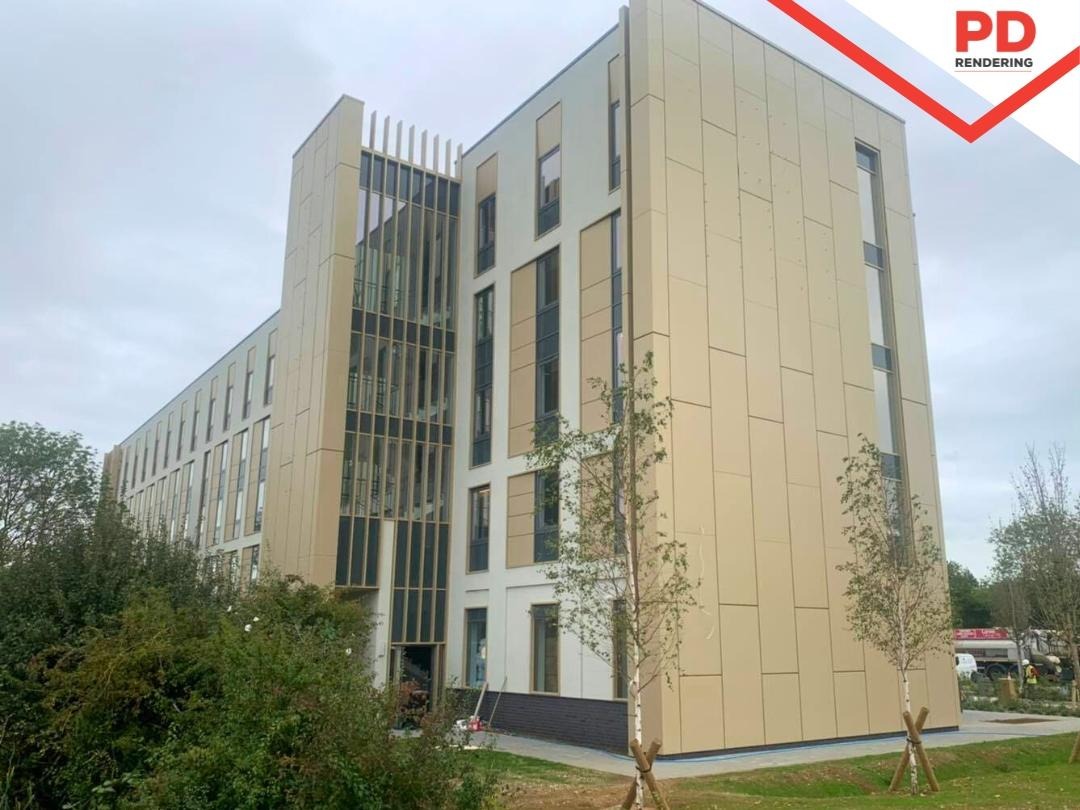
EPS is lightweight, clean to work with, and quicker to install. It’s a popular choice for small to medium-sized projects, especially on low-rise homes.
Mineral wool is heavier and can take a bit longer to install. It may release some fine fibres when cut, so protective equipment is recommended.
EPS is typically the more budget-friendly option, both in terms of material cost and ease of installation. It offers excellent value for money, especially for standard domestic properties.
Mineral wool tends to be more expensive, partly due to its non-combustibility, sound insulation properties, and higher environmental credentials. While the upfront cost is higher, it may be justified for multi-storey buildings, heritage properties, or where fire safety and breathability are a priority.
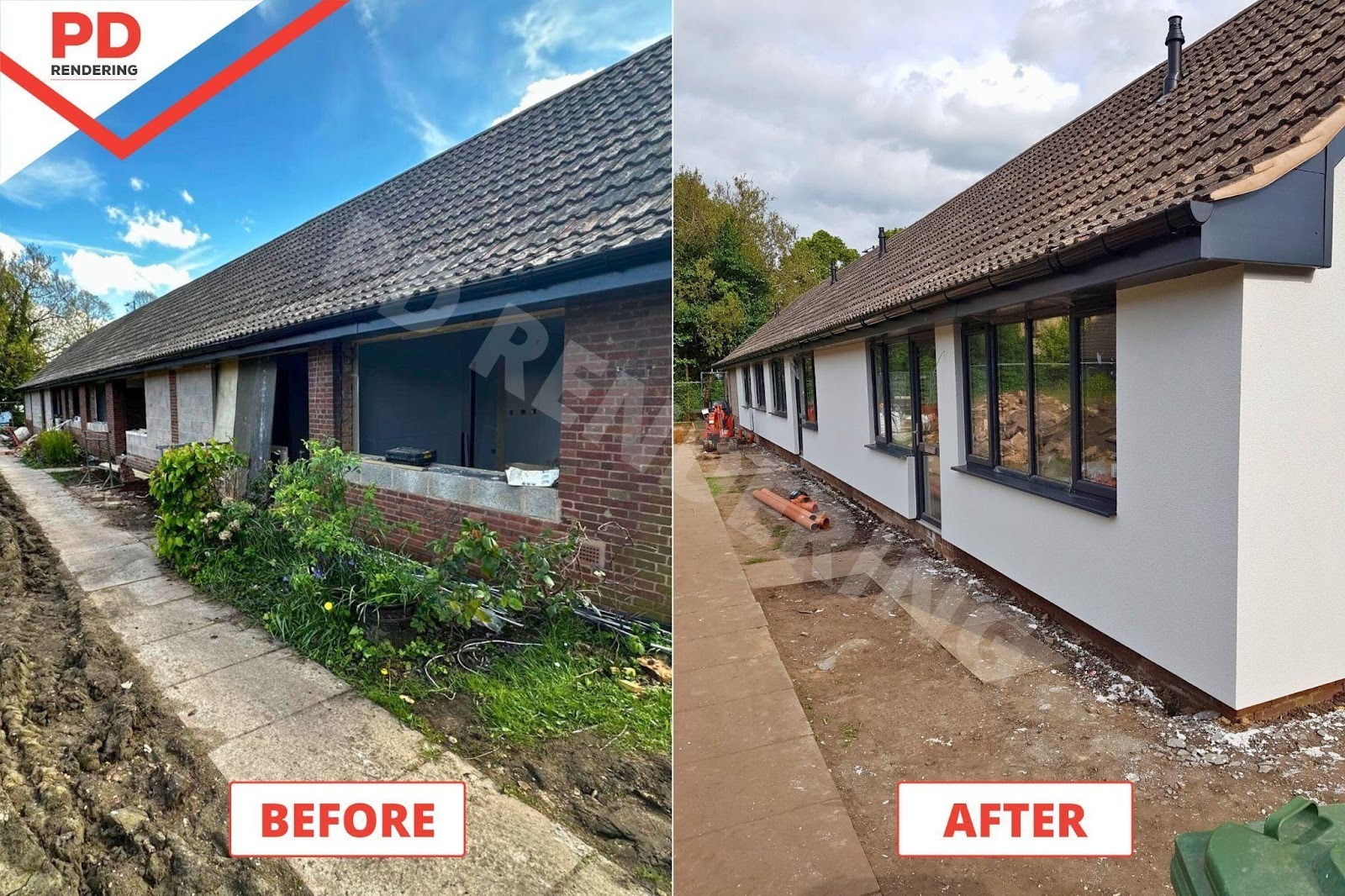
Both EPS and mineral wool are reliable choices for external wall insulation. The right option for your project often comes down to budget and building requirements.
If you're looking for a cost-effective solution with excellent thermal performance, EPS is a popular choice, especially for low-rise homes. On the other hand, if fire safety is a priority, mineral wool stands out with its A1 fire rating. Mineral wool also offers better breathability and sound insulation, making it ideal for properties where moisture management or noise reduction is important.
Every property is different, so it's best to speak with a professional installer who can assess your home and recommend the most suitable option based on your wall type, location, and budget.
Choosing the right insulation system isn’t always straightforward. That’s why it helps to speak with someone who truly understands the materials and the process.
At PD Rendering, we’ve been helping homeowners make the right choice for over 15 years. As a TrustMark-registered installer, we’re here to offer honest, expert advice. We work across Coventry, the Midlands, and the South East; from Birmingham and Leicester to Oxford, Derby, Nottingham, and London. Contact our team for a free no-obligation quote.
